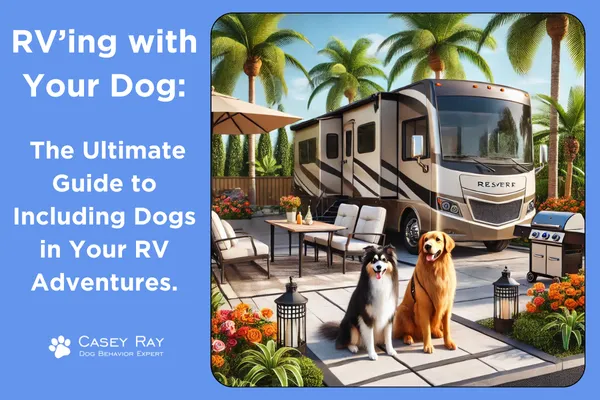
RV'ing with Your Dog: The Ultimate Guide to Including a Puppy Dog in Your RV Adventures
A Panicked Pup: A Reminder About Protecting Our Pets
Not long ago, my wife and I were relaxing on the patio of our RV when a commotion broke out in the distance.
We heard someone yell and before we could fully process what was happening, a small beige dog - wearing what looked like a sweater - ran past us on the drivable road that loops around the RV park.
It was clear this little one was in full panic mode, and we couldn't even tell what breed it was.
All I could think at that moment was, “Somewhere, there’s a scared Momma out there desperately searching for this baby.”
Time is critical in situations like this.
Every second that dog remained on the run increased the risk of something catastrophic happening.
Would it dart into the road?
Run underneath a truck pulling a trailer?
Run into an aggressive dog or wild animal?
In extreme temperatures during the summer, you talk about panic. I’ve seen it. These animals are in danger of severe dehydration, and more importantly, heat stroke.
Certain breeds have less time than others and minutes can make a difference.
Local RVer’s attempting to help were only making the situation worse, unintentionally driving the terrified pup farther away.
It was painfully obvious this dog hadn’t been socialized around strangers, which made its fear even more pronounced.
My wife and I sprang into action, loading two of our own playful, stable dogs into their bicycle buggy.
Our hope was that their presence might help calm the little runaway if we could track it down.
Sometimes, dogs will approach other dogs when they won’t go near humans, resulting in a successful recall.
Unfortunately, despite our efforts, we couldn’t find the dog.
The RV park was back to normal the next day and we never heard or saw anything more about it.
But, you know what? To this day, I still wonder what happened to that little pup.
Did someone finally manage to attract it and reunite it with its owner?
Is it still wandering lost or even living with new owners?
Or did it face a tragic end?
Moments like these are preventable, and as pet owners, there are steps we can take to protect our dogs from situations like this.
This experience weighs on me, and that’s why I’m sharing this story.
I recently add the opportunity to appear on the popular RV LIFE Podcast discussing a lot of this exact stuff. That full episode can be easily listened to by clicking >> HERE
Your Dream Dog Is Waiting For You
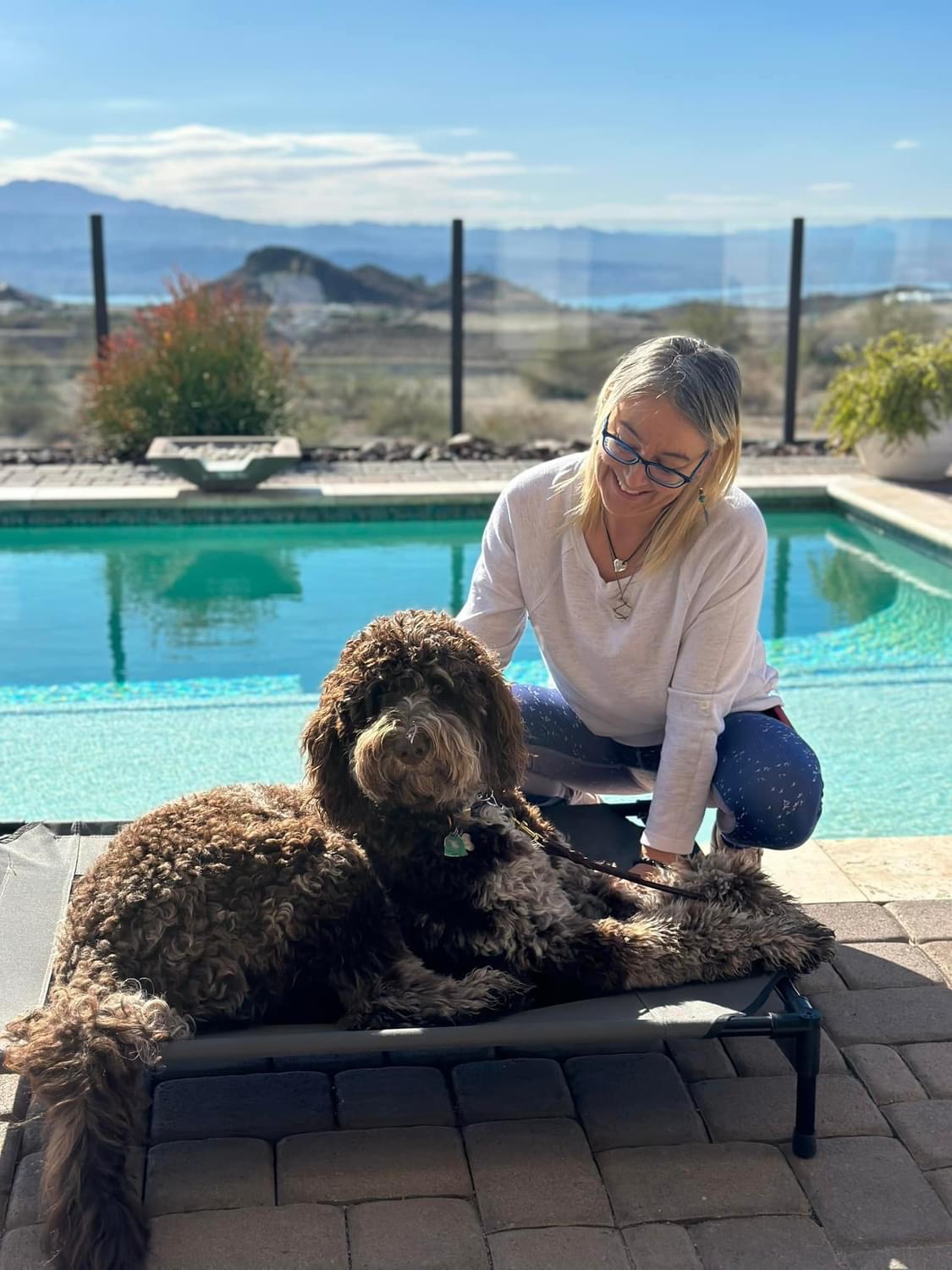
Imagine this: a dog who’s calm, confident, and completely stress-free. A dog who listens to you with unwavering reliability, no matter the distractions around you.
This is your Dream Dog - the companion who brings joy and ease to your life!
Picture walking your dog with no pulling, no jumping - just pure connection as you bond together.
Guests stop by the RV? No chaos, no stress.
The dog runs out the door in front of you? A simple command has them turning around and returning to you immediately.
When it's time to venture out and explore, you can choose to leave your dog behind with confidence or bring them along, knowing they'll be the perfect companion on your journey.
Doesn't that sound a whole heck of a lot better?
While having a Dream Dog sounds incredible, the reality for many dog owners is often far from this - pulling on walks, constant barking, bolting out of the door, jumping on guests, or the stress of feeling like your dog just doesn’t listen.
Why Most Dog “Training” Fails & What To Do Instead
Many years ago, I met a Soft-Coated Wheaten Terrier with a happy-go-lucky personality. The dog had wonderful owners, and I was excited to help them achieve the Dream Dog they envisioned.
This dog was incredibly well-socialized, sharp as a tack, and we made great progress through training - nailing commands like Place, Sit, Come, and then moving on to Down.
I can’t recall the dog’s name, but I’ll never forget the lesson I learned.
Beneath that cheerful, easygoing exterior was a dominant personality in disguise.
When we began reinforcing the Down command - a position that requires true submission - we hit a wall of resistance.
Why?
Up until that point, this dog had never been pushed to do anything it didn’t want to do.
It had always been coaxed or rewarded, but never challenged.
This is a common mistake: stopping your training journey after the learning phase.
A dominant dog can be bribed with treats forever, but the moment you ask it to do something it doesn’t prefer to do, the resistance becomes clear.
That experience taught me a valuable lesson about the importance of recognizing different personalities and tailoring the training focus accordingly to address deeper, underlying issues.
It’s also a powerful reminder of why you should never cut your training journey short after just the basic learning phase.
Many dog owners focus on tools and tactics rather than addressing behavior at a deeper level.
Training based on personality rather than the dog or breed is essential for lasting success.
Within every breed, you’ll find a variety of personalities.
Here are the 6 personalities I use when creating a training blueprint for success. 🐩
Hyperactive
Dominant
Kennel Case
Happy-Go-Lucky
Aggressive
Shy
Does one of these sound like your dog? Take our free quiz to discover your dog’s true personality by clicking here.
Another common issue is that many obedience programs only address surface-level training.
This often leaves out the essential phases of reinforcing, proofing, and unleashing - key to ensuring your dog can thrive in an RV lifestyle or resort-style living.
The Dream Dog Formula consists of 6 phases of training designed to create lasting results:
Awareness
Learning
Reinforcing
Proofing
Unleashing
Maintaining
Common Question: I’ve done training in the past, how would this be any different?
Did your training cover multiple phases?
Many group classes, like those at PetSmart, or even trainers lacking deeper awareness, often stop at the learning phase, skipping critical steps for real-world success.
Quick Test: Does your dog listen without a treat or other bribe?
If not, chances are high your training didn’t go beyond the basics. That’s okay! You can always build upon what you’ve already started.
The Most Important Factor In Ensuring You Have A Dream Dog: Socialization
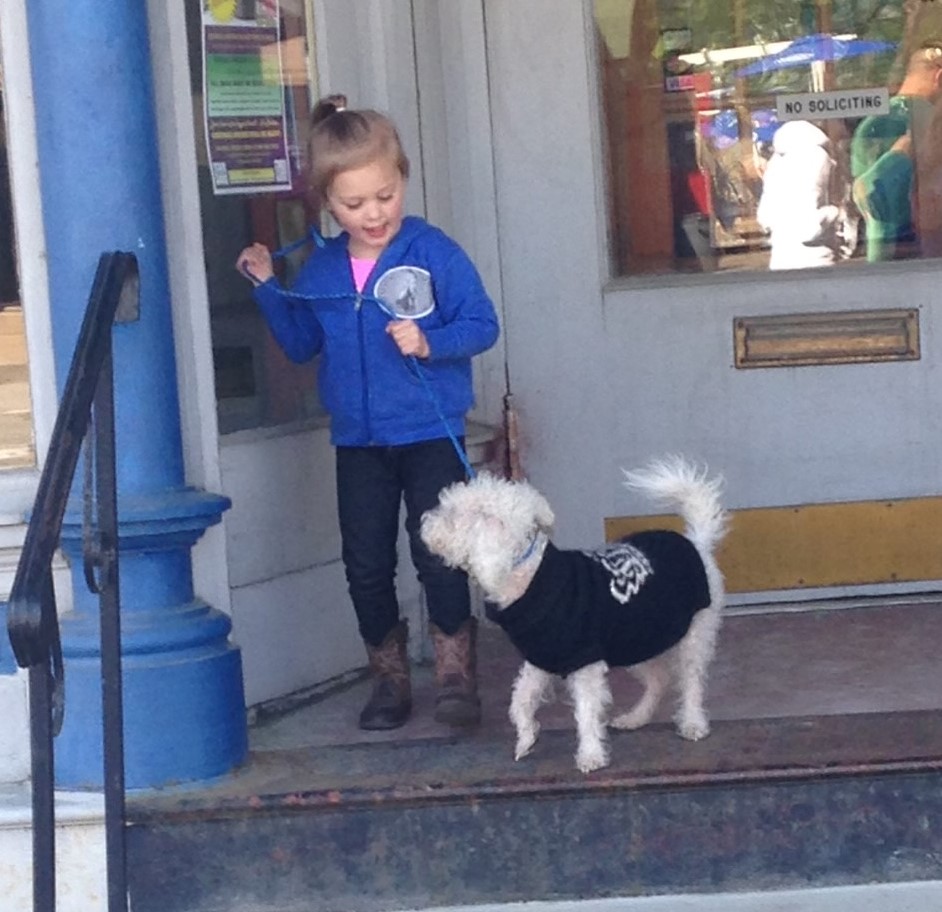
Socialization is a cornerstone of effective training and determines how your dog responds to new environments, people, and challenges.
Considering an Adventure with Your Dog?
Are you getting a new puppy for your travels, or do you already have a dog you plan to bring? 🐕🦺
Be honest with yourself - will your current dog add to your journey’s pleasure or create unnecessary stress?
If it’s the latter, consider enrolling in an obedience program or pursuing training on the road to help ease the stress.
Interested in personalized help? I can guide you through online training or even join you in your RV. Click here to watch a short video of me explaining my training process.
For New Puppy Owners
Some breeds have a certain reputation. But no matter what breed you have or are interested in, it’s not the breed that matters in terms of training, it’s the personality.
Do you have a socialization plan in place for the critical 8–13 weeks of age? This is the perfect window to acclimate your puppy to the RV lifestyle, including new surroundings, dogs, and people.
Housebreaking: Both urination and defecation accidents can happen in the RV if your dog isn’t potty trained, leading to floor damage and hard to remove odors.
Larger the dog, the larger the mess.
When selecting a puppy, aim for one under 16 weeks old (preferably 8-13 weeks) with energy and dominance levels that match your lifestyle.
Remember, within every breed, there’s every personality - focus on the personality, find the right fit, and you’ll thank yourself later.
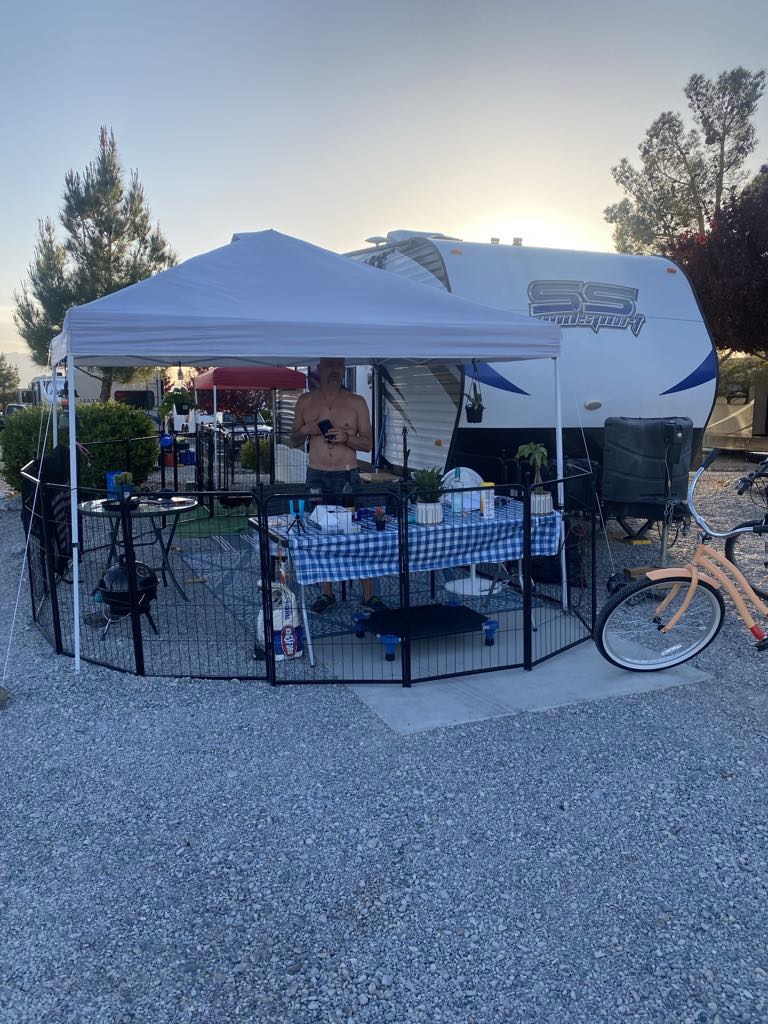
Quick Checklist for RV Travel with Dogs 📝
Here are some key challenges to prepare for:
Resort Pet Policies: Check for size, weight limits, number of pets allowed, or breed restrictions at each location.
Untrained Dogs (Yours or Others): Are you prepared for living in close quarters with other dogs? Proper setups, such as fencing or designated containment areas, can prevent conflicts.
Appetite and Stress: Dogs may stop eating due to the stress of traveling through unfamiliar environments. This is especially common in under socialized dogs transitioning between new scenarios.
Health Emergencies: Research veterinary care in advance. Some areas may lack emergency services, not accept new patients, or have no vet clinics nearby.
The Elements: Always have backup plans for extreme weather. In cases of heat or air conditioning failure, a few minutes can make all the difference for
your dog’s safety. I’ve seen a 5th wheel become a sweat box in a matter of minutes during the summer in Arizona when an A/C went out.
By preparing ahead, you’ll set yourself and your dog up for a stress-free, joyful journey.
Side note: While personality is far more important than breed, as mentioned earlier, it’s worth noting that some RV parks enforce breed restrictions. Be sure to research the policies of the places you plan to visit.
Commonly Restricted Breeds Include:🚫
German Shepherds
Anatolian Shepherds
Australian Shepherds (Yes, sometimes)
Belgian Malinois
Chow Chows
Pit Bulls and Staffordshire Terriers
Rottweilers
Cane Corsos
Wolf breeds
Presa Canarios
Akitas
Dobermans
Mastiffs
Malamutes and Huskies (Yes, sometimes)
Even if your dog’s personality is a perfect fit for RV life, these restrictions could affect your travel plans, so it’s always better to check ahead.
PRO TIP: If your dog is amazing and it happens to be an Aussie, here’s a little trick I've seen work. Say you have an Aussie instead of an Australian Shepherd!
Why many owners struggle to have a well-behaved, well trained dog on the road:
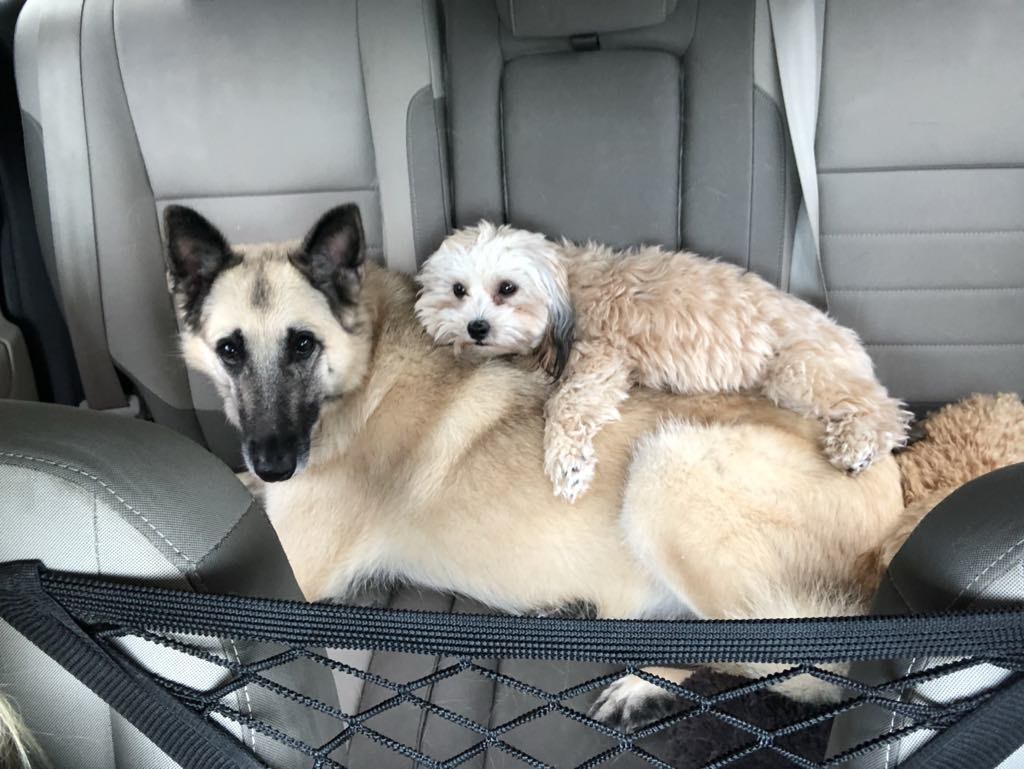
If I were to create a graph showing the dog owners I’ve worked with over nearly 30 years, I’d have to be honest: around 85% of owners either lack awareness of what true training involves and its purpose, believe they can handle it themselves, or struggle to be honest about the reality of what’s truly happening with their dog.
Very often, they unintentionally reinforce the wrong behaviors without realizing it.
Okay, so many owners do enroll their dog in a training program once they become aware. Unfortunately, of that percentage, even less go on beyond the initial learning phase, which is critical for comfortable RV life living.
Lack of Awareness on the Owner's Part: With so much conflicting information out there, it’s easy to feel overwhelmed.
Take the time to do a little research, find professionals you resonate with (medical, training, and grooming), and trust the guidance they provide.
When it comes to training, focus on programs that prepare your dog for real-world scenarios, giving you reliable control around outdoor distractions, not a 6-week group class type that won’t leave lasting results.
I also highly recommend seeking out a holistic vet. With the rising trend of pushing unnecessary vaccines and chemicals for profit, many of today’s veterinarians prioritize personal gain over your dog’s well-being (yes, it happens daily).
Most importantly: If something feels off, it probably is. Always trust your intuition.
Human vs. Canine Psychology: This is something I build awareness around daily: we cannot reinforce our dogs’ behaviors the same way we do with our children.
Human psychology often leads us to coddle, but in the canine world, this unintentionally reinforces the very state of mind we’re trying to change.
For example, stroking your dog and saying, “It’s okay, it’s okay,” when they’re fearful or anxious is no different than petting them and saying, “Good boy, good girl.” To your dog, you’re reinforcing their fear or anxiety as acceptable behavior.
When we unintentionally reinforce these emotional states, it becomes a cycle that can lead to more severe behavior issues - one of the biggest reasons why so many dogs end up in shelters.
Simply put: They don’t understand our words, they understand energy. By leading with calm, confident energy, you help your dog feel secure and balanced.
NOTE — This will be hard because now you're going against your habitual way of thinking. It’s easy to revert back to coddling without notice.
Lack of Consistency in Training: Training dogs, much like personal growth for us, should never be viewed as a “one and done” situation. It’s an ongoing process - that’s why the final phase in the Dream Dog Formula is called the maintaining phase.
The more you integrate training into your daily routines, the better the results you’ll see. Instead of dreading it as a chore - “Ugh, I have to train the dog” - you can make it a fun, natural part of life.
In the maintaining phase, you learn how to apply obedience training in ways that simplify your life. It’s not just about commands like sit, down, stay, place, or come - it’s about learning how to use those skills to make day-to-day life easier and more enjoyable.
Consistency is the key. ✔️
Set the bar high, and you’ll be amazed at how your dog rises to meet your expectations, following the consistent structure and boundaries you put forth with great pleasure!
Training Misconceptions:
One common misconception is: “Some dogs don’t need training.” While this may seem true, in reality, you can’t provide your dog with the best life possible without it.
Proper training not only lays the foundation for future learning but also builds confidence, gives you control, and allows your dog to view you as a leader rather than a littermate.
It teaches your dog how to learn and, most importantly, opens the lines of communication between you and your dog.
Bottom line: A properly trained dog understands with clarity and knows exactly what you’re asking. This results in a life of fulfillment for both of you.
An untrained dog, or one that’s only surface-trained, is often confused about what you want.
They may get rewarded for one thing one day, but in trouble for the same thing the next.
This inconsistency leaves them confused and unable to thrive. While they’re always happy to see you, they just can’t become all they can in that situation.
PRO TIP: Pitfalls to Avoid
If I listened to every opinion from everyone who wants to share theirs, I would have zero clarity around my experience and skills.
Avoid listening to the opinions of other dog owners who have no more expertise in canine behavior or training than you do.
People are often quick to share their opinions, but not all advice is created equal. Trust your instincts and seek guidance from qualified canine professionals instead :)
Other potential problems to be aware of: 💩
PROBLEM 1: Dog Does Not Come When Called
A dog without a reliable recall can escape and cause panic, leading to a variety of unsafe situations.PROBLEM 2: Reactivity or Aggression
Dogs that haven’t been properly trained may become frustrated, especially if they lack adequate exercise. This can result in conflicts with other dogs or people, potentially breaking resort policies.PROBLEM 3: Leash Pulling
Dogs without leash manners often pull on the leash, wrapping themselves around the owner's legs. For elderly or physically compromised owners, even a small dog can present a safety hazard.PROBLEM 4: Jumping on You or Guests
A dog that constantly jumps on you or your guests, whether during walks or visits, is more than just a nuisance. For larger breeds, this can pose serious safety and liability concerns.PROBLEM 5: Separation Anxiety
Dogs with separation anxiety can cause significant damage in an RV or may defecate and urinate when left alone. How will you manage your plans to explore, dine out, or leave your dog alone?
What is the solution? 💡
All the problems and issues mentioned above can be avoided by mastering a few key commands. What are these commands?
Ironically, they’re the same three I teach in my Dream Dog Trifecta Training Formula.
These core commands are essential because they provide the foundation for all other training and behavior management.
COME: A solid recall is non-negotiable.
With this command, your dog learns to return to you on command and automatically sit in front of you.
This can prevent dangerous situations, like running off or escaping, and is vital for both safety and control.
A 100% reliable recall is also crucial for giving owners the confidence to explore new surroundings with their dogs.
In my experience, the proofing phase should be your baseline, with the unleashing phase as the ultimate goal to guarantee the highest level of reliability.
I’ve personally witnessed owners calling their dogs to safety off-leash in outdoor settings, even with predators approaching. It’s an absolute must!
HEEL: For a controlled or ‘structured’ walk, the heel command ensures your dog walks calmly beside you without pulling or getting underfoot.
It’s a game-changer when navigating through busy areas or keeping your dog safe on leash, preventing sudden tugs and unwanted behavior while maintaining focus and connection.
When this command is taught properly, a dog understands when they are in “heel” and when they are not - important!
PLACE: My favorite and the most versatile command I teach. I always teach this first as it introduces the ‘built-in’ stay concept.
This command is generally taught on a pet cot and should be thought of just like a crate without walls.
Amazingly, it can also be used to assist with 7 of the top 10 most searched dog behavioral problems online.
The place command helps your dog learn to stay in a designated area regardless of distraction, which is crucial for preventing unwanted behaviors and providing structure, especially in distracting environments like RV parks or resorts.
PRO TIP: To keep dogs fulfilled, daily exercise and stimulation is a must. I’m going to share a quick tip for those of you who are always on the go and have a hard time finding the time to keep Fido fulfilled.
Dogs consist of both physical and mental energies. Tapping into both at the same time will turn the exercise into a full-body workout, engaging both their body and mind, and can accomplish in 20 minutes what would usually take 60!
Here’s a little breakdown: 👀
MENTAL: Obedience through the Reinforcing Phase - The reinforcing phase in training plays a crucial role in channeling your dog’s mental energy by encouraging them to think, rather than simply relying on bribes.
PHYSICAL: Exercise burns off physical energy, but mental exercise through proper obedience is what keeps your dog engaged and sharp.
As previously mentioned and noted again here - If you stop short of the reinforcing phase in the Dream Dog Formula, you risk relying on rewards or bribes, which doesn’t encourage independent thinking.
The reinforcing phase solidifies obedience and strengthens your dog’s ability to make decisions and respond thoughtfully, not just react.
Taking your training through a reinforcing phase also allows you to use your obedience at a higher level, during both walks and play.
EXAMPLES:
Physical Energy: A simple walk or a game of retrieve where your dog burns physical energy but usually not a lot of thinking involved.
Mental + Physical Energy: Put your dog’s walk on your terms by using commands like “heel” or mix in obedience during a game of retrieve.
For example, add “sit” or “down” with built-in “stays” between throws.
I call the combination of the two “structured,” resulting either a structured walk or structured play.
Using this structured approach gives your dog a fulfilling workout in half the time! 🕖
What you can do from here -
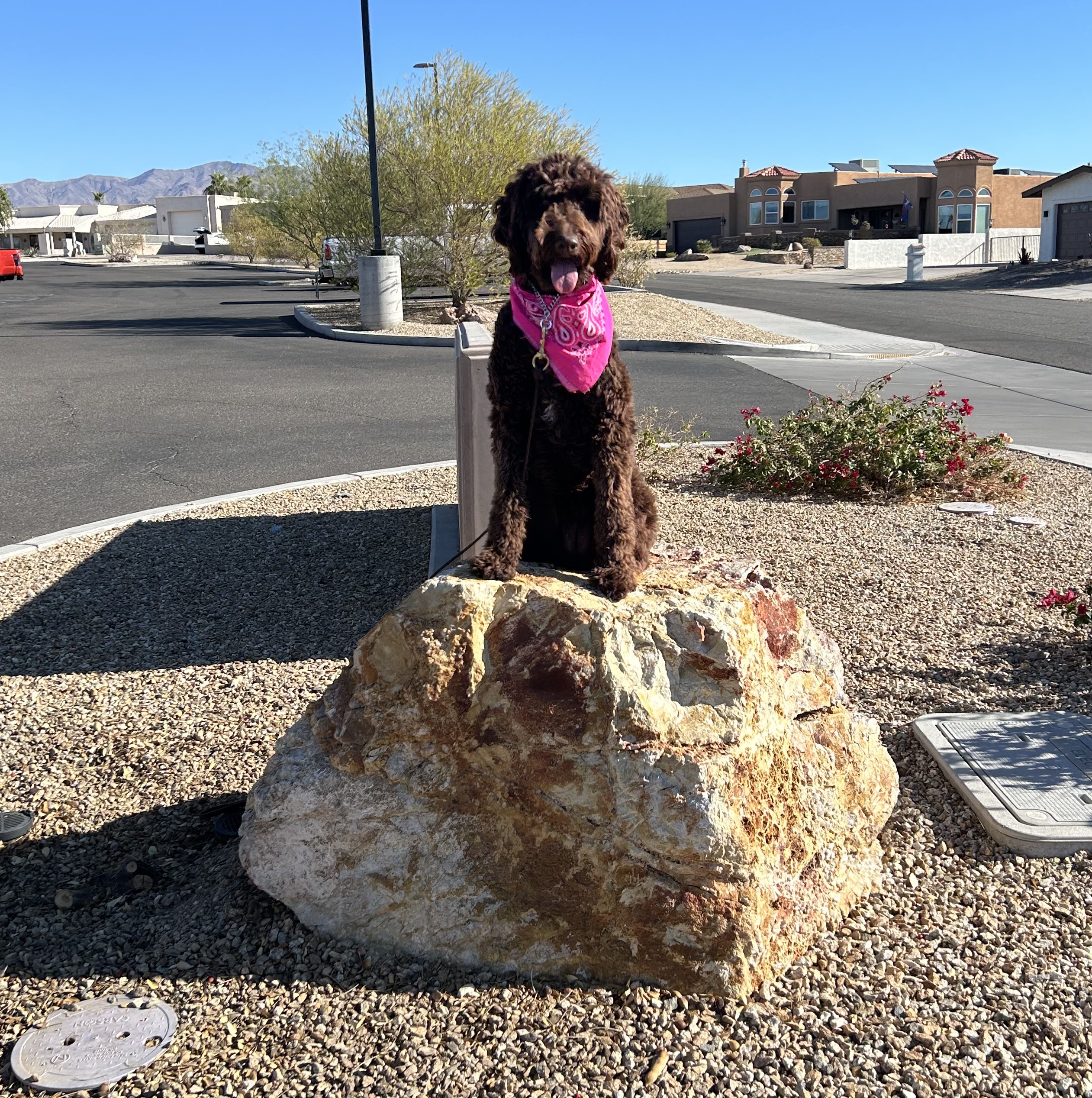
If You’re Considering Getting a Puppy or Dog:
Book a consultation with me to get personalized advice on the best breed or training approach for your situation by clicking >> HEREIf You Already Have a Dog:
Watch my in-depth video explaining how my training process works. You can also apply to work with me directly by clicking >> HEREJoin My Private Facebook Group:
Access exclusive training resources by joining my group >> HEREHave a Question?
Email me with your key takeaway and your number one question after reading this: [email protected]
It’s been a blast!
~ Happy Training and RVing!
Casey

